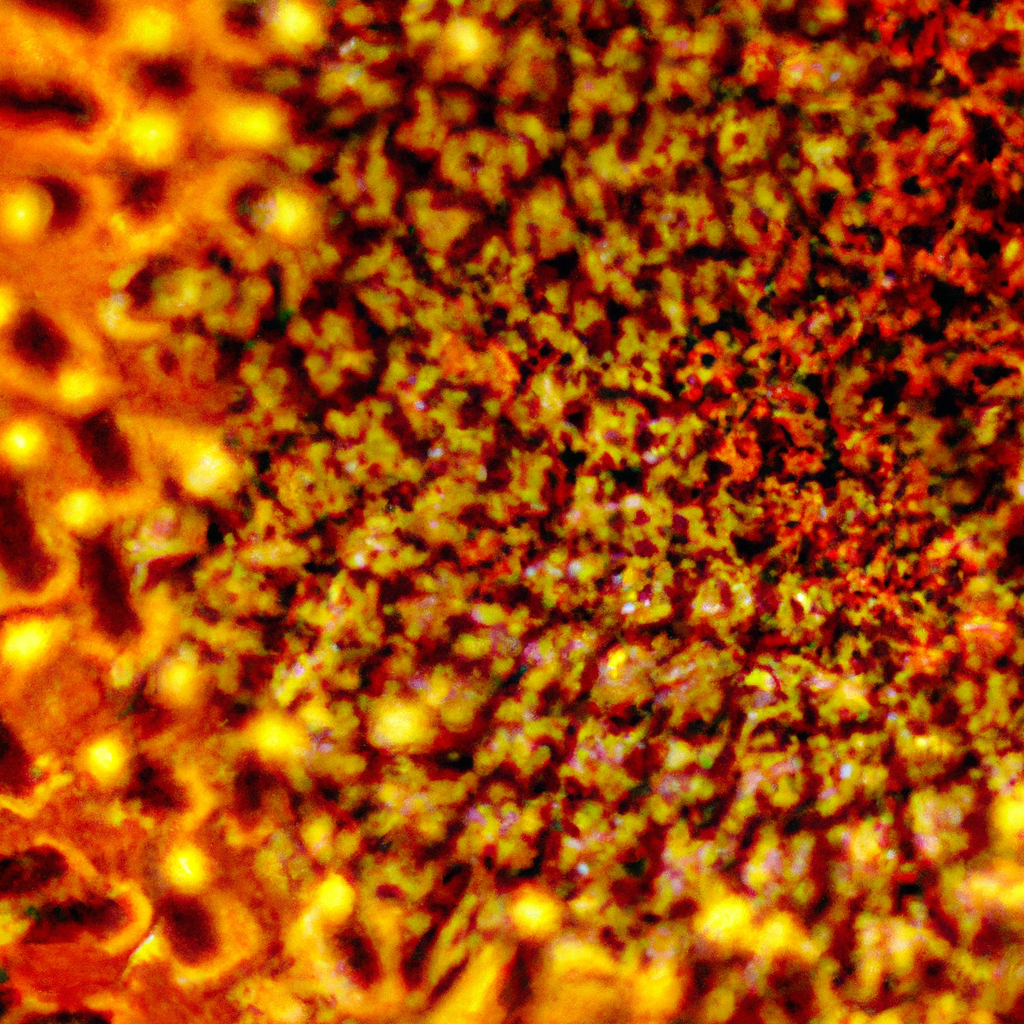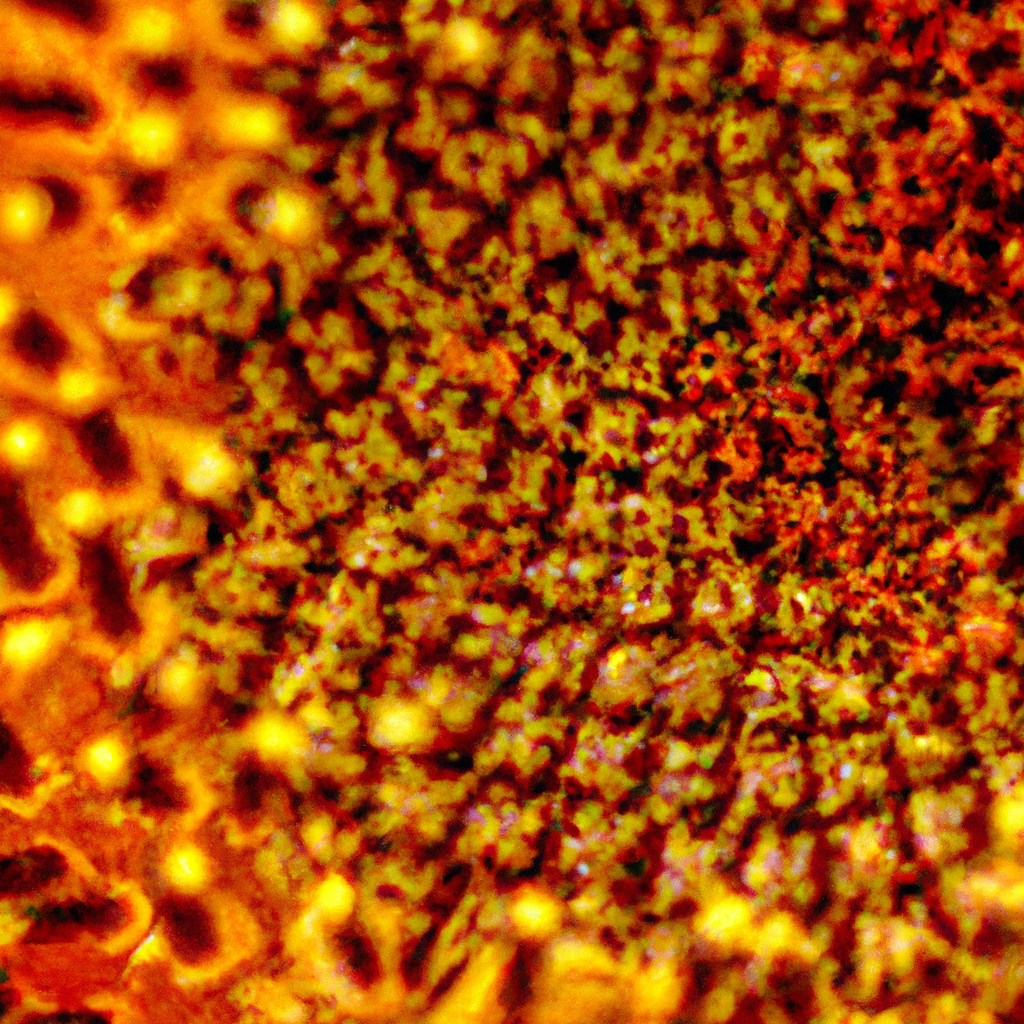Alright, listen up! This article is all about UVB, an acronym that stands for “Ultraviolet B.” You may have heard about UV rays before, but UVB is a specific type that has both its benefits and risks. So grab your shades, because we’re about to shed some light on all things UVB in the next few minutes. So, what exactly is UVB and how does it affect us? Let’s find out!

What is UVB?
UVB is a type of ultraviolet (UV) radiation that reaches the Earth’s surface from the sun. It is one of three types of UV radiation, along with UVA and UVC. UVB radiation has a shorter wavelength than UVA radiation, which means it is stronger and can cause more damage to the skin and eyes.
Definition of UVB
UVB, which stands for ultraviolet B, is a form of electromagnetic radiation with a wavelength range of 280 to 320 nanometers. It is classified as a type of ionizing radiation because it possesses enough energy to remove tightly bound electrons from atoms, creating ions.
How is UVB produced?
UVB radiation is produced by the sun as a result of nuclear fusion reactions within its core. These reactions generate an enormous amount of energy, which is emitted as radiation in various forms, including UVB. UVB is also produced by some artificial sources, such as tanning beds and certain types of lamps.
Difference between UVB and UVA
The main difference between UVB and UVA radiation lies in their wavelengths and their ability to penetrate the Earth’s atmosphere and the skin. UVB radiation has a shorter wavelength and higher energy compared to UVA radiation. Although both types of radiation can cause harm to the skin, UVB radiation is primarily responsible for sunburns and the production of vitamin D, while UVA radiation is more closely linked to premature skin aging and the formation of wrinkles.
Health Effects of UVB Exposure
Positive effects of UVB exposure
While excessive UVB exposure can be harmful, moderate exposure to UVB radiation is actually necessary for the body to produce vitamin D. Vitamin D plays a crucial role in maintaining healthy bones and teeth, regulating calcium absorption, supporting immune system function, and reducing the risk of certain diseases such as osteoporosis and multiple sclerosis.
Negative effects of UVB exposure
Despite its importance in vitamin D synthesis, excessive UVB exposure can have detrimental effects on the skin and overall health. The most common negative effect of UVB exposure is sunburn, which can cause pain, blistering, and peeling of the skin. Prolonged exposure to UVB radiation can also lead to premature skin aging, including the development of wrinkles and fine lines. Moreover, repeated and intense exposure to UVB can increase the risk of developing skin cancer, including the most deadly form, melanoma.
Sunburn
Sunburn occurs when the skin is exposed to UVB radiation for an extended period of time without adequate protection. It is characterized by red, swollen, and painful skin that may develop blisters and peeling. Sunburns not only cause discomfort but also increase the risk of skin damage and skin cancer in the long run. It is important to protect the skin from UVB radiation by using sunscreen, wearing protective clothing, and seeking shade during peak UVB hours.
Skin aging and wrinkles
Excessive exposure to UVB radiation can contribute to the premature aging of the skin. UVB rays penetrate the skin and damage collagen and elastin fibers, which are responsible for its strength and elasticity. Over time, this damage leads to the development of wrinkles, fine lines, and sagging skin. Protecting the skin from UVB radiation by using sunscreen and wearing hats and sunglasses can help minimize the risk of premature skin aging.
Skin cancer
UVB radiation is a known carcinogen, meaning it has the potential to cause cancer. Prolonged exposure to UVB rays can damage the DNA in skin cells, leading to the formation of cancerous cells. The most common type of skin cancer caused by UVB exposure is basal cell carcinoma, followed by squamous cell carcinoma. Melanoma, the deadliest form of skin cancer, can also be triggered by intense and repeated exposure to UVB radiation. It is crucial to protect the skin from UVB radiation and to regularly check for any suspicious moles or changes in the skin.
Vitamin D Synthesis
UVB and vitamin D synthesis
UVB radiation is essential for the body’s production of vitamin D. When UVB rays reach the skin, a chemical reaction occurs in which a form of cholesterol is converted into vitamin D3, or cholecalciferol. This vitamin D3 is then transported to the liver and kidneys, where it is further converted into its active form, known as calcitriol. Calcitriol plays a crucial role in regulating calcium and phosphorus levels in the body, which are essential for maintaining strong and healthy bones.
How does UVB contribute to vitamin D production?
When UVB radiation comes into contact with the skin, it triggers a series of biological reactions that result in the synthesis of vitamin D. UVB rays penetrate the outer layers of the skin and interact with a molecule called 7-dehydrocholesterol, which is found in the skin cells. The UVB radiation causes 7-dehydrocholesterol to undergo a structural change and transform into previtamin D3. This previtamin D3 is then converted into vitamin D3 through a heat-dependent process.
Importance of vitamin D
Vitamin D is crucial for maintaining overall health and well-being. It helps the body absorb calcium and phosphorus from the intestines, leading to strong and healthy bones. Vitamin D also plays a role in supporting immune system function, regulating blood pressure, and modulating cell growth and differentiation. Deficiency in vitamin D has been linked to various health problems, including rickets in children, osteomalacia in adults, and increased risk of certain cancers, autoimmune diseases, and cardiovascular disorders.
Measuring UVB Intensity
UV Index
The UV Index is a measurement of the intensity of UV radiation from the sun. It is a scale ranging from 0 to 11 or higher, with higher values indicating stronger UV radiation. The UV Index takes into account various factors, including the angle of the sun, cloud cover, and ozone levels, to provide an estimate of the potential for sunburn and skin damage. The higher the UV Index, the greater the risk of UVB exposure and the need for sun protection measures.
Methods and instruments for measuring UVB intensity
UVB intensity can be measured using various instruments, such as UV meters, spectrometers, and radiometers. These devices detect and quantify the amount of UVB radiation present in a given area. They provide valuable information for monitoring UV levels, assessing sun protection needs, and studying the effects of UVB radiation on the environment and human health.

Protecting Against UVB
Sunscreen
Using sunscreen is one of the most effective ways to protect the skin from UVB radiation. Look for a broad-spectrum sunscreen that provides protection against both UVA and UVB rays. Apply sunscreen generously to all exposed skin before going outside, and reapply every two hours or after swimming or sweating. Choose a sunscreen with a sun protection factor (SPF) of at least 30, and consider using a higher SPF if you will be spending extended periods of time in the sun.
Clothing and accessories
Clothing and accessories can provide additional protection against UVB radiation. Wear tightly woven and dark-colored clothing, as these offer better protection than light-colored or loosely woven fabrics. Opt for long-sleeved shirts, long pants, and wide-brimmed hats that shade the face and neck. Sunglasses with UV protection are also important for safeguarding the eyes against UVB rays.
Seeking shade
Seeking shade during peak UVB hours, usually between 10 a.m. and 4 p.m., can greatly reduce UVB exposure. Stay under trees, umbrellas, or other types of shade that block direct sunlight. Remember that UVB rays can still reach you indirectly, so it is important to take additional sun protection measures even when in the shade.
Avoiding peak UVB hours
Avoiding the sun during peak UVB hours, when the sun is at its highest point in the sky, can help minimize UVB exposure. Plan outdoor activities for early morning or late afternoon, when the sun’s rays are less intense. This can help reduce the risk of sunburn and the harmful effects of UVB radiation on the skin.
UVB and Tanning
Tanning process
Tanning is the process by which the skin darkens in response to UV radiation. It is the body’s natural defense mechanism against UVB exposure, as the increased production of melanin, the pigment responsible for skin color, helps protect the skin from further damage. However, it is important to note that any change in skin color due to tanning indicates DNA damage caused by UVB radiation.
UVB and tanning beds
Tanning beds emit UV radiation, including both UVA and UVB rays. The UVB radiation in tanning beds is artificially produced and can be even more intense than the UVB radiation from the sun. Excessive use of tanning beds can increase the risk of skin cancer, eye damage, and premature aging of the skin. It is recommended to avoid tanning beds altogether and opt for safer alternatives, such as self-tanning products or spray tans.
Dangers of excessive tanning
Excessive tanning, whether from natural sunlight or artificial sources like tanning beds, can have serious consequences for the skin and overall health. Prolonged exposure to UVB radiation can lead to sunburn, premature aging of the skin, and an increased risk of skin cancer. It is important to practice safe sun behaviors, protect the skin from UVB radiation, and avoid excessive tanning to maintain healthy skin and reduce the risk of long-term damage.
Treating UVB-induced Conditions
Sunburn remedies
In the event of sunburn, there are several remedies that can help alleviate the discomfort and promote healing. Applying cool compresses or taking cool baths can help soothe the skin. Moisturizers or aloe vera gel can provide hydration and relieve dryness. Over-the-counter pain relievers, such as ibuprofen, can help reduce pain and inflammation. It is important to avoid further sun exposure until the sunburn has healed completely.
Skin care routines for UVB damage
Developing a proper skin care routine can help repair and minimize the damage caused by UVB radiation. Cleansing the skin gently and using a moisturizer can help restore hydration and improve skin barrier function. Incorporating antioxidants, such as vitamin C and E, into a skin care regimen can assist in reducing inflammation and protecting against free radicals. Regular use of broad-spectrum sunscreen is essential to prevent further UVB damage.
Medical treatment for skin cancer
If skin cancer is diagnosed, treatment options depend on the stage and type of cancer. Surgical removal of the cancerous cells is often the primary treatment for skin cancer. In some cases, additional treatments such as chemotherapy, radiation therapy, or targeted therapy may be recommended. Regular skin examinations and early detection are crucial in ensuring prompt treatment and improving the chances of a successful outcome.
UVB and Eye Health
UVB and the eye
UVB radiation can cause damage to the eyes, just like it can damage the skin. The cornea, lens, and other structures of the eye are susceptible to the harmful effects of UVB rays. Without proper protection, excessive UVB exposure can lead to various eye conditions and diseases.
Potential eye conditions caused by UVB
Unprotected and prolonged exposure to UVB radiation can contribute to the development of several eye conditions. These include photokeratitis, a painful condition often referred to as “sunburn of the eye,” as well as cataracts, which cause clouding of the eye’s lens. UVB radiation has also been linked to the development of pterygium, a non-cancerous growth on the surface of the eye, and macular degeneration, a leading cause of vision loss in older adults.
UVB protection for the eyes
To protect the eyes from UVB radiation, it is essential to wear sunglasses that offer adequate UV protection. Look for sunglasses that block 100% of UVA and UVB rays, as indicated on the label. Wrap-around styles or sunglasses with large lenses can provide additional coverage and reduce the amount of UV radiation reaching the eyes. Wearing a wide-brimmed hat can also help shade the eyes and provide added protection.
Environmental Impact of UVB
Ozone layer depletion
The depletion of the ozone layer, particularly the presence of the ozone hole over Antarctica, has led to an increase in UVB radiation reaching the Earth’s surface. Ozone molecules in the stratosphere absorb a significant amount of UV radiation, including most UVB rays. However, certain man-made substances, such as chlorofluorocarbons (CFCs), have been found to contribute to the depletion of the ozone layer, allowing more UVB radiation to penetrate the atmosphere.
Effects of increased UVB on ecosystems
Increased levels of UVB radiation can have profound effects on ecosystems. UVB radiation can damage or kill phytoplankton, microscopic organisms that form the base of the marine food chain. This can have cascading effects on other organisms and disrupt the delicate balance of marine ecosystems. UVB radiation can also affect land-based organisms, such as plants and insects, by inhibiting growth, altering reproductive patterns, and causing DNA damage.
Conclusion
UVB radiation, although necessary for vitamin D synthesis, can have both positive and negative effects on human health and the environment. While moderate exposure to UVB is important for the production of vitamin D and overall well-being, excessive exposure can lead to sunburn, premature aging of the skin, and an increased risk of skin cancer. Protecting against UVB radiation is crucial and can be achieved through the use of sunscreen, protective clothing, seeking shade, and avoiding peak UVB hours. By taking the necessary precautions, one can minimize the harmful effects of UVB radiation and maintain healthier skin and eyes.
